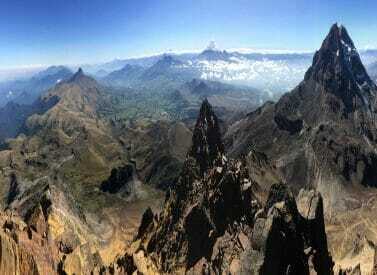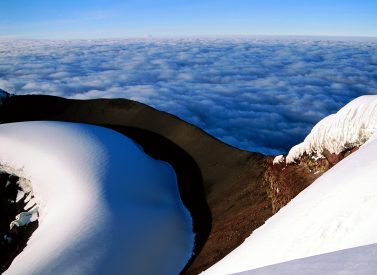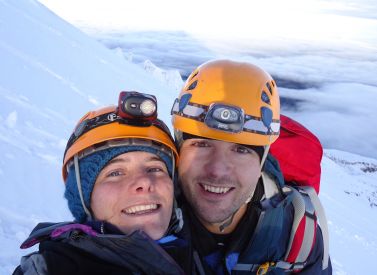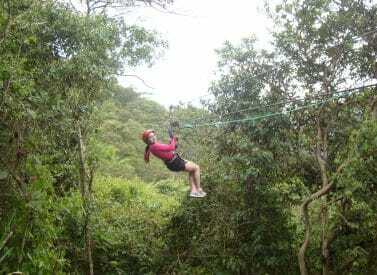
Ecuador Lodge to Lodge, from 4 days, Cotopaxi Hike
Our lodge-to-lodge hiking tour offers the best trekking in Ecuador in comfort.
We hike around Ecuador’s volcanoes, walking through Cotopaxi National Park past volcanic peaks, canyons and verdant forests.
After a great day’s hiking, we rest up in one of our handpicked selection of haciendas and mountain lodges.
The stunning Cotopaxi volcano often dominates our vista, and we visit its glacier. For those with more energy,you have the option add on a climb of Cotopaxi at the end of trek.
More on Ecuador lodge hikes
Cotopaxi National Park is a stunning mountain region of Ecuador that attracts climbers and hikers from around the world.
The wildlife is abundant and if we’re lucky, we may spot the wild horses that run freely in the park.
We offer this 4-day version, a 5-day trip with a Ruminahui (4,600m/15,092ft) ascent.
There is also a 7-day version of this trek with both Ruminahui and Cotopaxi climbs included.
Trip Highlights
Print Share Download as PDF-
Enjoy wonderful hikes around Cotopaxi.
-
Relax in cosy haciendas and mountain Ecuatorian lodges after a great day's walking.
-
Expert guides take you off-the-beaten-trek to see forests and canyons.
-
Hike up to the glacier line of the mighty Cotopaxi volcano.
The guides on the mainland were fantastic, well informed, excellent English and enthusiastic - especially Andres. Such a beautiful and varied country. The itinerary was perfect and all the arrangements worked well.
L. Course, Ecuador hike, UK
Full Itinerary
Day 1: Transfer Quito to Pasochoa, trek to summit (4,200m), descend via Pita canyon to Cotopaxi Pungo Lodge (L,D)
Two activities in one day: First we climb the Pasochoa peak.
At 4,200m/13,780ft Pasochoa is a challenge that will get our engines revving in anticipation of the second part of our adventure. Access is not difficult and our hike to the peak takes about three hours over grassland trails.
From the summit, you get a spectacular view of the mountains surrounding Quito, the inspiring scenery of the Pasochoa crater, as well as the impressive surrounding mountain crests: Antisana, Sincholagua, Quilindana, Cotopaxi, Ruminahui, Corazon and the twin Iliniza peaks.
The second part of our day consists of the descent to the Pita river canyon, a downhill walk of about three hours through grasslands and low ‘Chaparro’ forests, ending at the Cotopaxi Pungo Lodge, situated at about 3,200m/10,499ft above sea level and with great views to Cotopaxi itself.
Hours walking: 7hrs
Max. elevation: 4,200m/13,780ft
Day 2: Hike Pedegral canyon and forests to Los Mortinios hacienda (B,L,D)
Today we embark on a particularly scenic hike across high mountain forests and along the course of the Pita river, whose source is the glacial melt water of the giant of the Park, Cotopaxi.
The hike will take around six or seven hours, and the descent is gradual from the humid Andean forests through the grasslands of Cotopaxi down to the area known as the Pedregal.
The day ends at the Los Mortinios hacienda, a cosy retreat designed for mountaineers, whose walls are covered with stories of famous Ecuadorian mountain climbers.
The lodge is located at the entrance to Cotopaxi National Park, at approximately 3,600m/11,811ft above sea level, with stunning views over to Cotopaxi.
Hours walking: 7hrs
Max. elevation: 3,600m/11,811ft
Day 3: Pita river canyon trek to eastern Cotopaxi, Hosteria Tambopaxi (B,L,D)
We continue our journey along the Pita river canyon.
But now the scenery changes: we enter the flatlands on the Eastern side of Cotopaxi where we see the foothills of Mt. Sincholagua and the majestic Eastern side of Cotopaxi.
We cross an arid plain before arriving at the Hosteria Tambopaxi, a beautifully built and situated mountain lodge.
The journey takes us about five hours, through a landscape that varies between grassland and stony plain.
Along the way we may see the wild horses that run in the area, as well as some of the better known birds such as the Curiquingue and, with a bit of luck, the Andean Condor.
Hours walking: 5hrs
Max. elevation: 3,700m/12,139ft
Day 4: Trek to Cotopaxi snowline, transfer to Quito, ends (B,L): Or 5 day option, climb Ruminahui today (4,600m), or add Cotopaxi summit.
Glacier day!
From the lodge we drive in our private vehicle to the parking area of the Cotopaxi mountain refuge.
We walk for approximately an hour before reaching the mountaineers’ lodge, and hike from there to the edge of the glacier, a walk of approximately two hours.
From here, the northern side of the mountain offers a spectacular panorama.
You can identify (with the help of our guide) all the ground we have covered from the first day of our adventure: Quito, its valleys, the distant mountains in the north, and the road from Pasochoa, through the Pita canyon, to el Pedregal, Sincholagua, Ruminahui and the magnificent Limpiopungo valley.
The descent, which takes approximately 2 hours, takes the same route back to the parking lot and we head back to Quito and drop you off at your hotel (hotel not included) and say farewell at the end of this stunning trek.
Hours walking: 4hrs
Max. elevation: 5,100m/16,732ft
Prices From $1,122 / £912 per person
What's Included?
Bilingual guide, transportation and support vehicle for luggage throughout trip, meals (B = breakfast, L = lunch, D = dinner), lodges and transfers as indicated, first aid kit
What's Not Included?
Flights (we can look for these), Quito hotels (we can look for these, too), park entrance fees, tips, alcoholic and soft drinks, insurance, personal items and clothing, mountaineering plastic boots / kit if climbing Cotopaxi.
Accommodation
Locally owned mountain lodges and haciendas.
Most offer private rooms with private bathrooms with flush toilets and warm water showers.
In more remote areas facilities are more basic and you may need to share a room / shared toilets.
Tour Staff
Throughout the tour, a local, English speaking Ecuadorian guide with many years’ experience will accompany you.
Our local drivers and support staff have worked with us for many years.
Staff employed at the lodges are generally from the local communities.
Meals
Almost all dietary requirements can be catered for – please ask us for more information.
Breakfasts at hotels will feature teas, coffees and juices to drink, plus cereals, fruit, eggs, toast and jams etc.
While out on tours, we either supply a packed lunch of sandwiches, snacks, soup, fruit etc, or we eat at a local restaurant/hacienda. These are often buffet style with soups, rice, pasta, potatoes and then puddings/fruit.
Our accommodation will provide evening meals. In general, it’s a soup for starters followed by an Ecuador inspired main dish – some international meals may be available at certain lodges.
Activity Level
The tour is open to people of good mobility and health with some experience of trekking.
We build in acclimatisation and our walks aim to be 5-7 hours in length.
We grade this as an ‘medium’ trek because of the high altitude and consecutive hiking days.
Trekkers ideally need to be used to walking while carrying a daypack and ideally accustomed to walking for 4-7 hours on consecutive days.
However, we can also accommodate first time trekkers and people who are in good physical shape.
Practical Information
Introduction to Ecuador
Ecuador is the second smallest South American country, and one of the most varied.
It comprises three main geographical areas: the coast, highlands and Amazon plus is home to the Galapagos Islands.
Because of its relatively compact size, it makes a great holiday destination as you can move from highlight to highlight fairly easily and rapidly.
Geography of Ecuador
Landscapes vary from the drier south to the more humid north.
The Highlands, or sierra, encompass two Andean Cordilleras (the Central and Western), which run north to south through the country. Ecuador’s largest volcano is Chimborazo (6,310m) whose summit, because of its proximity to the equator, is the closest point on earth to the sun. Several of Ecuador’s volcanoes are still active, and it’s a great area for trekking.
Descending the steep, east-facing slopes of the eastern Cordillera, one passes through a transition zone comprising dense cloud forest and humid high jungle, before entering the Amazon lowlands.
This mainly primary rainforest covers a third of the country, accounts for 5% of the population and stretches across Ecuador, from its Colombian to its Peruvian borders.
The Galapagos Islands are simply unique. Lying 600 miles off the mainland, the archipelago comprises the summits of gigantic equatorial volcanoes.
The flora and fauna of the Galapagos, long separated from their continental cousins, have evolved differently. Charles Darwin used his observations there to develop his theory of Evolution.
Ecuador mainland climate
Ecuador lies between latitudes 4º south and 2º north. Overall, climate varies according to time of year, altitude and region.
In the Ecuadorian highlands, there is little temperature variation by season; this depends largely on altitude.
In Quito, shade temperatures range from 6 to 10ºC in the morning and from 19 to 23ºC in the afternoon, with cool nights. In the lower intermontane basins, it gets significantly warmer.
Rainfall depends on whether an area lies closer to the eastern or western Andes. To the west, June to Sept is the dry period and Oct to May the wet (with often a short, dry spell in Dec or Jan).
The best period to visit Quito and trek and climb volcanoes such as Cotopaxi is the west Andean dry season of June to Sept and Dec/Jan. This is also Ecuador’s high season. During the Oct to May wet season, most rainfall is in the afternoons.
To the east, Oct to Feb are dry and March to Sept are wet. Overall, the southern highlands are drier than the northern highlands.
Kit list
Good kit is vital for every trip.
Book with Andean Trails and get 15% off Páramo’s fantastic ethical and high performance outdoor gear.
Overview
When planning for the climatic conditions encountered in the High Andes, layering is the most practical and versatile clothing system. It’s worth remembering that our clothing keeps us warm by retaining and isolating the heat we ourselves create.
To best maintain body heat, several layers of lightweight, warm and quick-drying clothing are far more efficient than one or two thick layers. Layers should have the following qualities:
- Breathability (able to wick away the humidity produced by sweat):
- Isolation (able to keep in the warm air our body produces); and
- Impermeability (able to impede the passing of wind and water).
First (base) layer: This layer wicks the sweat away from our skin, thus helping keep the body dry and warm. To this end, synthetic fabrics such as polypropylene should be used.
Mid layers: These isloating layers should also be synthetic (e.g. the known polar linings such as polartec or windblock, which are light and insulate twice as well as wool). Very important layers for retaining body heat.
Outer layer / shell: Finally, the vital layer which protects us from climatic adversities. A breathable, wind-proof and waterproof anorak, such as Goretex.
Give plenty of thought to kit selection, and try to keep weight down. Below is a more detailed guide.
Detailed kit list
- 2 pairs synthetic inner socks (e.g. polypropylene, thermastat, coolmax) and 2 pairs thick loop-stitch/wool socks for cold.
- Trekking boots – should be well broken-in, waterproof and provide good ankle support.
- Trainers/sandals for city-wear, evenings at lower camps & river crossings.
- Base layer leggings (1 pair).
- Thick fleece leggings (or salopettes) (1 pair).
- Goretex-type over-trousers (or salopettes) (1 pair).
- Trekking trousers (2 pairs).
- Shorts – wear sparingly in early stages at altitude, as sun burns.
- Thermal base layer shirts (2).
- Microfleece mid-layer shirt (1).
- Shirt/t-shirt 1 or 2 for lower altitudes. Long-sleeved, collared shirt protects against sun
- Fleece jacket or similar (1).
- Warm jacket (down or synthetic). For camp and upper slopes.
- Waterproof Goretex-type jacket.
- Broad-brimmed sunhat, essential.
- Warm hat, fleece or wool. (N.B. Up to 30% of body heat can be lost through the head).
- Sunglasses with UV filter.
- Scarf for cold.
- Bandanna – to protect neck from strong sun.
- Light inner gloves
- Warm gloves, e.g. fleece, and outer waterproof gloves or mittens (1 pair)
- Mittens allow you to keep the fingers together, and better conserve heat (though they also make it difficult to perform certain tasks).
- Daypack (at least 30 litres). Comfortable and with waterproof lining or cover.
- Pair of telescopic trekking poles (optional). Note: You must have rubber tips on your poles if you tour visits Machu Picchu.
- Duffel bag or large rucksack for extra clothing, carried by horse/mule/porter while you are trekking.
- Water bottle (2 litres approx.).
- First-aid kit.
- Towel & wash-kit.
- Wet Wipes/antiseptic hand-wash cream.
- Sunscreen (factor 40+) and lip salve.
- Head-lamp (plus spare bulb and batteries).
- Penknife.
- Travel alarm clock.
- Plastic bags – ‘Zip-loc’ & tough bin liners.
- Camera and film / memory cards (take at least twice the amount you think you will need!).
- Book, e-book, mp3 player/ipod or other for free time.
- Binoculars.
- Spanish/English phrasebook.
All other non-personal trekking gear is provided at the lodges e.g. bedding, cutlery etc,
Miscellaneous others
- Money belt.
- Passport.
- U.S. dollars cash, mixed-denomination notes, undamaged and unmarked.
- ATM cash/credit card.
- Any inoculation certificates.
- Personal & medical insurance certificates.
- Presents e.g. Postcards from home.
ATOL holiday protection
Andean Trails has 25 years of experience of putting together the best South America holidays.
We pay a fee to the CAA for every licensable passenger we book since we hold an Air Travel Organiser’s Licence granted by the Civil Aviation Authority. In the unlikely event of our insolvency, the CAA will ensure that you are not stranded abroad and will arrange to refund any money you have paid to us for an advance booking.
We also offer ATOL (Civil Aviation Authority) protected holidays to give our customers peace of mind when booking and travelling.
When you buy an ATOL protected air holiday package from Andean Trails Ltd you will receive a Confirmation Invoice from us confirming your arrangements and your protection under our Air Travel Organiser’s Licence number 6275.
You can read more about ATOL, who is covered and what protections you have if not ATOL-covered, on our ATOL page.
What is ATOL?
The CAA’s ATOL scheme offers protection to your money and your holiday if you book with us. Not everybody is covered (see ‘Who is covered?’ for more), as you must purchase an ‘air package holiday’ with Andean Trails to be protected.
And ‘air package holiday’ is defined as including a flight and some ground services (hotel, transfer, trek etc). This is also known as an ‘ATOL-protected holiday’.
Who is covered?
To be covered by ATOL, you must book a flight and some ground services with us and be from the UK. If you are from the UK and only book ground services and no flights, you are not covered by ATOL (see below for more on how non-ATOL clients are covered).
If you are outside the UK and buy flights with us, you will be ATOL protected IF any of the flights booked with Andean Trails touches/stops in the UK at any point during your holiday package booked with us.
If you buy your flights elsewhere, please check with that agent if you are ATOL protected. Be careful with online flight purchases and make sure you know what protection you have, if any, before paying for flights.
Not all holiday or travel services offered and sold by us will be protected by the ATOL scheme. Please ask us to confirm what protection may apply to your booking.
For land only holidays not involving any air travel, in accordance with “The Package Travel, Package Holidays and Package Tours Regulations 1992”, all UK passengers booking with Andean Trails Ltd. are fully protected for the initial deposit and subsequently the balance of all money paid to us, arising from cancellation or curtailment of travel arrangements due to the insolvency of Andean Trails.
I’m not ATOL covered, what protection do I have?
If you are not ATOL covered, any payments you make to us go to a Trust account.
We can only access this money once your tour has been completed, meaning that if anything happens to Andean Trails Limited while you are on holiday, then your money is secure and you can either complete the trip or be able to make it home.
If you pay for your holiday with a credit card, some offer payment protection – please check with your cardholder.
You also should have cancellation protection written into your insurance (which we recommend you have at the time of booking) in case you need to cancel.
Ecuador’s Amazon rainforest
Some 40% of Ecuador’s and is covered by Amazon rainforest.
As well as being rich in wild life, Ecuador’s rain forest is still home to a multitude of indigenous tribes, some of which have opened their communities to ecotourism.
A 4 or 5-day visit to one of the quality lodges will allow you to venture into beautiful primary forest.
Native guides lead you on verdant forest trails where you will see monkeys, tortoises, frogs and an array of birds including toucans and macaws.
Large mammals like jaguar, tapir and giant anteater have been spotted, but are elusive.
Ecuador’s Cloud Forest
Ecuador’s cloud forest covers its rolling hillsides as they descend from the high Andean plateaus into the rain forest or down to the Pacific coast.
Most of this tropical forest lies between 1,200-2,700m/3,937-8,858ft above sea level, an evergreen, lush and moist forest, teeming with bird and insect life.
Much of the cloud forest is readily accessible from Quito making it perfect a 2 or 3-day stay.
There are many lodges with virgin forest, home to a dazzling variety of hummingbirds, refreshing waterfalls for swimming, zip lining and wildlife walks.
The humming birds, Cock of the Rock and the chance of spotting larger mammals such as the spectacled bears are just some of the attractions of spending some time in this amazing ecosystem.
Cotopaxi, Ecuador
Cotopaxi National Park is dominated by the almost perfect cone shape of Cotopaxi (5,897m/19,347ft), an active volcano and the second highest mountain in Ecuador after Chimborazo.
The national park is well worth a visit for trekking in the foothills, climbing smaller peaks like Ruminahui, downhill mountain biking, horse riding or just enjoying the National Park itself.
The surrounding páramo is good for bird watching – you may see condors soaring above.
There are lots of lovely hacienda and mountain refugios to stay at in and around the park, and from which there are a variety of walks, horse rides and bike rides for all levels.
Ingapirca Ecuador
Ingapirca (meaning wall of the Inca) is just an hour from Cuenca and is the most important Inca archaeological site in Ecuador.
The site is in good condition and consists of a main elliptical building thought to be a sun temple, with typical Inca features such as trapezoidal doorways and niches.
There are Inca trails leading to and from the site, so you can visit on a day trip or incorporate a visit as part of a trekking itinerary.
You can travel here from Cuenca, or make it part of a trip from Baños to Cuenca.
Quito, Ecuador
Ecuador’s vibrant capital Quito sits in a stunning location, surrounded by snow capped volcanoes and many of the high peaks of the Andean sierra.
There is plenty to do for visitors of all ages and interests. The old town of Quito is a UNESCO world heritage site, with many beautiful churches and colonial facades, a wonderful range of museums and picturesque squares.
For an over view of the city and along the Avenue of volcanoes to north and south and to help with acclimatising try taking the Teleferico (cable car) up the eastern slope of Pichincha volcano.
At night Quito is a lively city. Head to the modern Mariscal area where tourists and locals alike find a great range of restaurants, bars and night clubs.
Prices From $1,122 / £912 per person
2025 price, per person, shared room basis
Based on four people
Private trip for two from USD 1,683 per person
5/6/7 day treks possible
Single supplement applies

Dates & Prices
Prices From $1,122 / £912 per person
2025 price, per person, shared room basis
Based on four people
Private trip for two from USD 1,683 per person
5/6/7 day treks possible
Single supplement applies
Can’t find what you’re looking for? Get in Touch
+44 (0)131 378 5593
+44 (0)131 554 6025



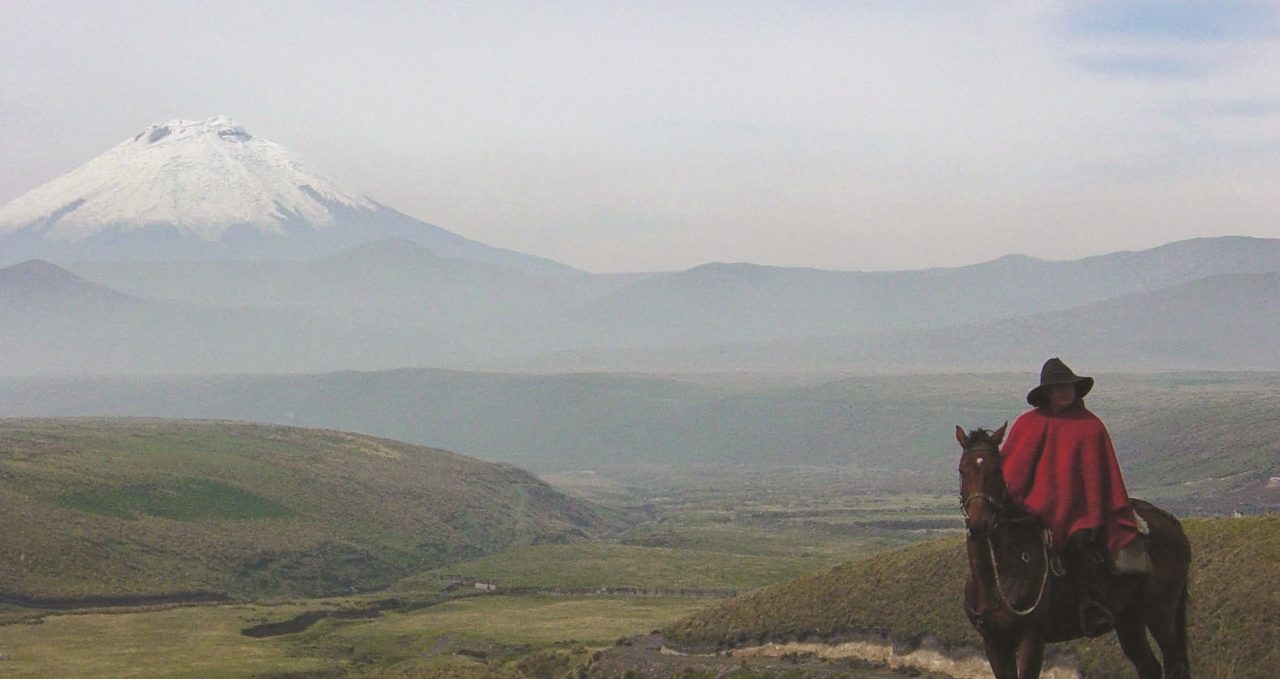
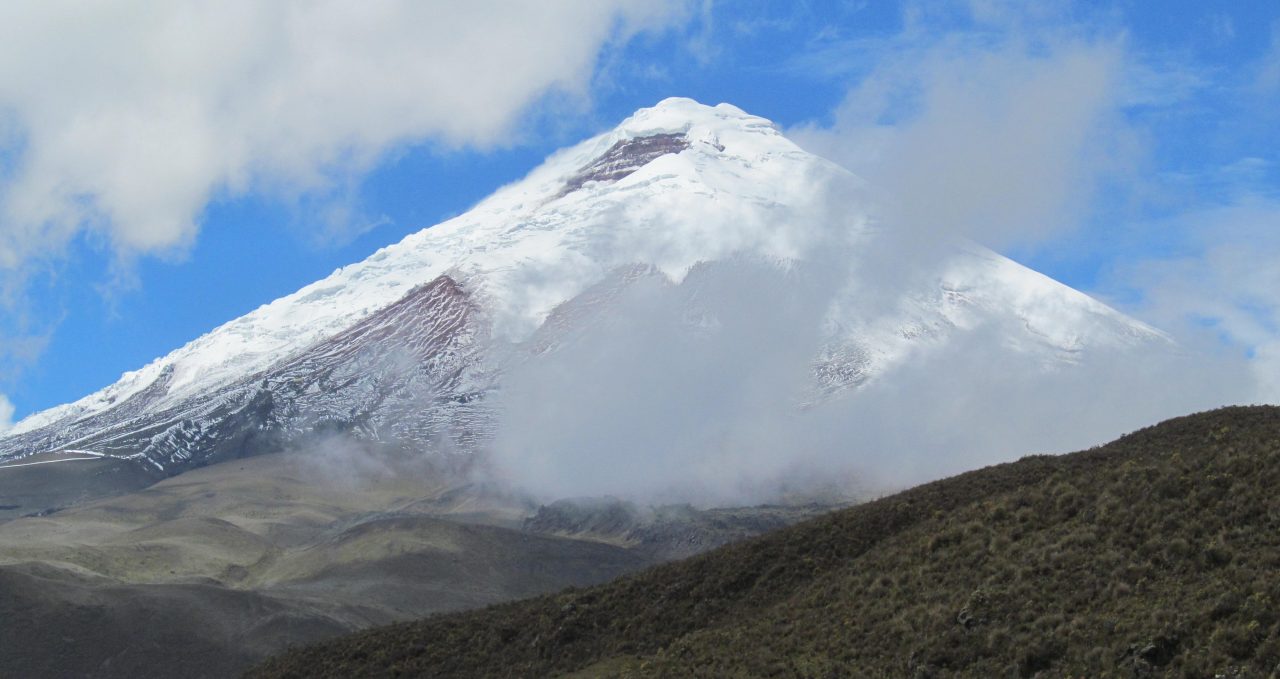
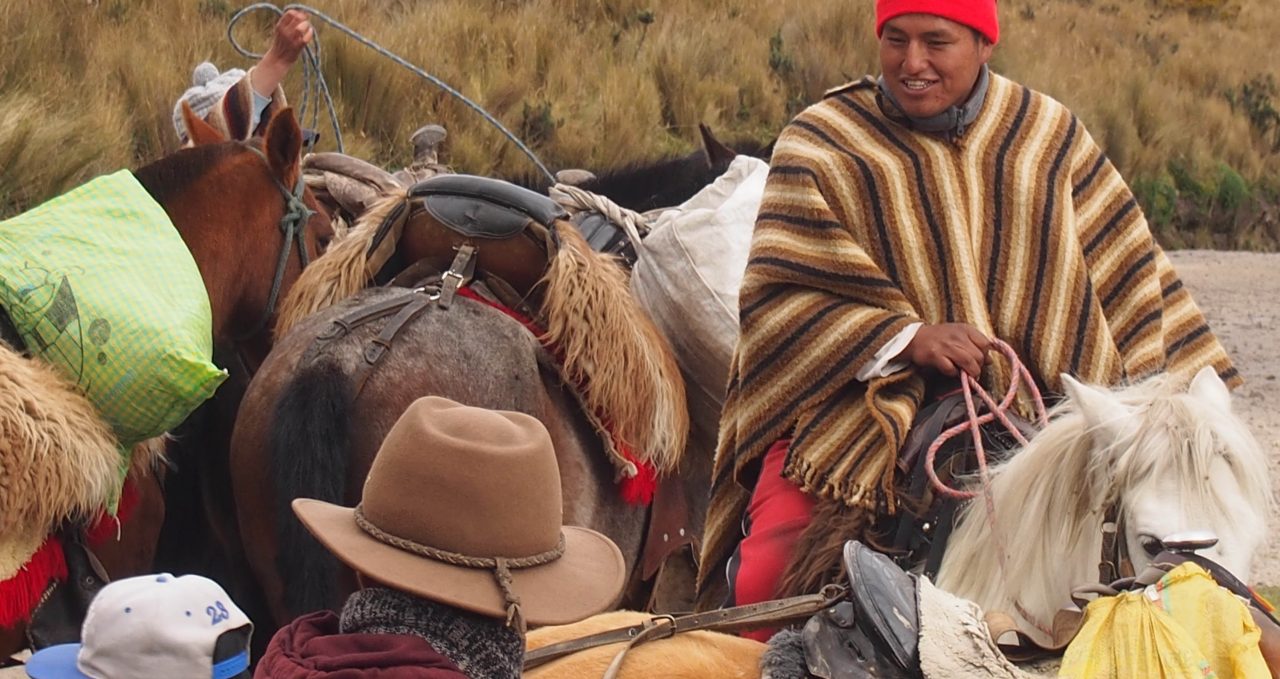
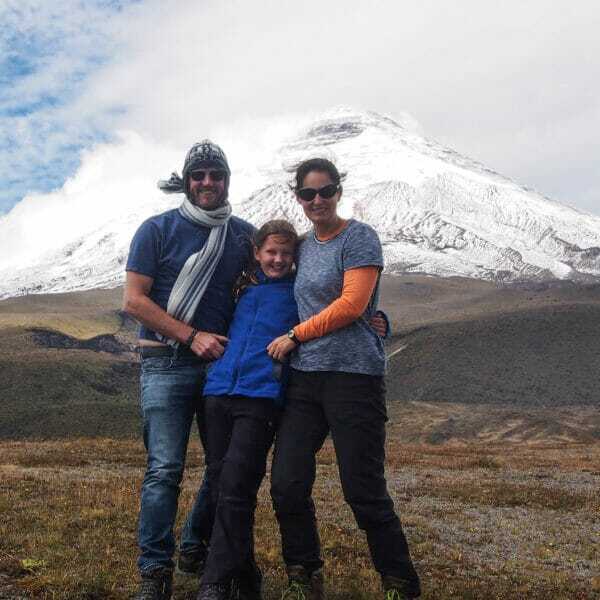
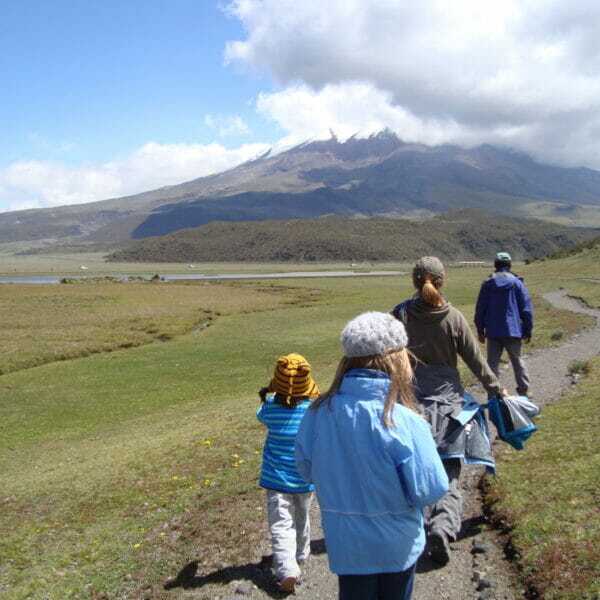
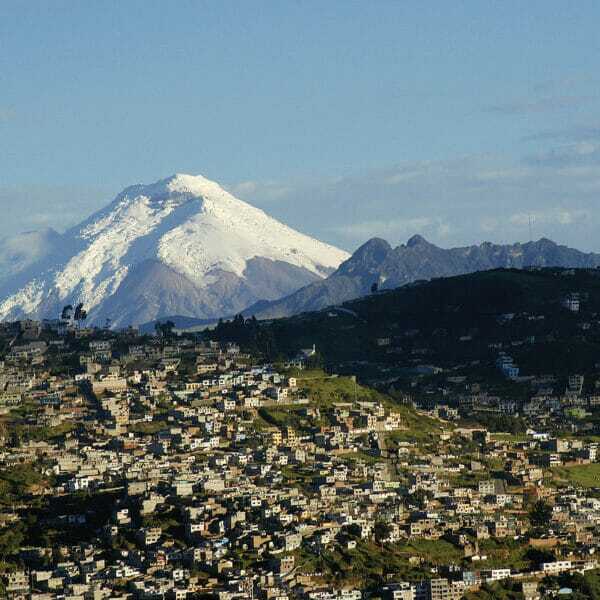
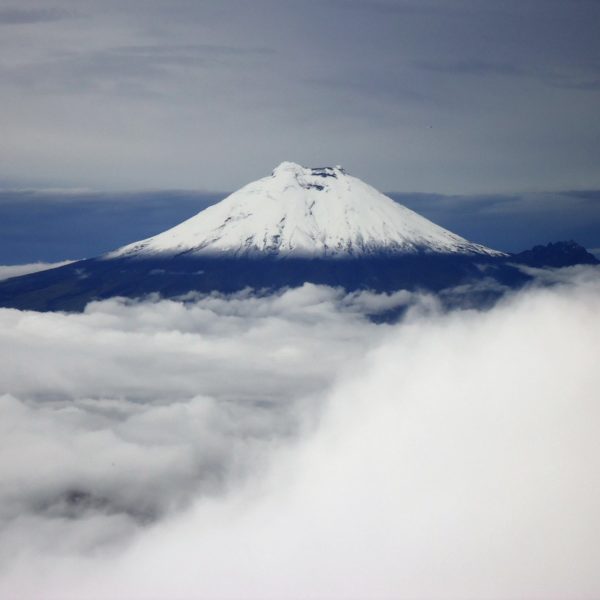
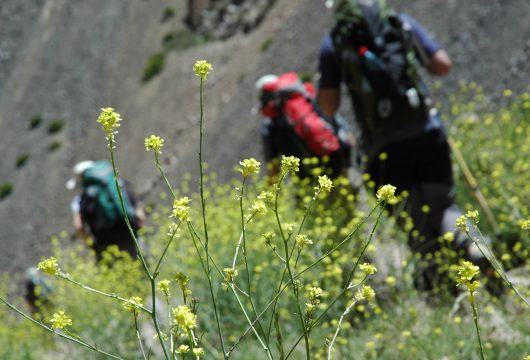
 a Tailor Made Tour
a Tailor Made Tour 